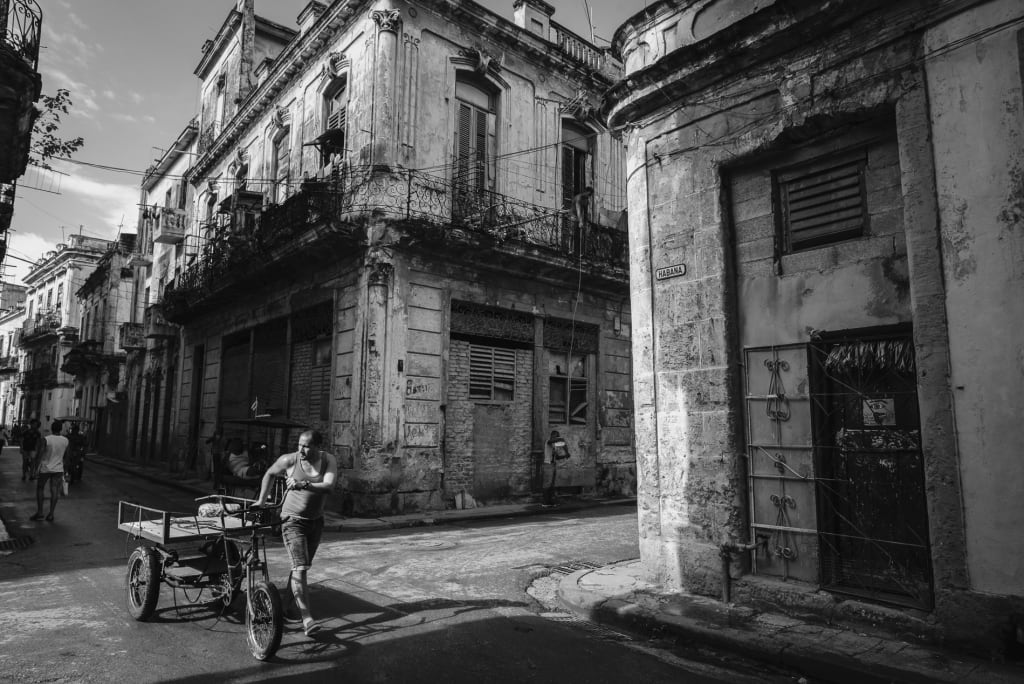
Sam strums his guitar. An old battered thing that has seen better days. The sound resonates off the ramshackle walls on the opposite side of the narrow street as he plays a song called El Despertar, a melancholic refrain that seems at odds with the general Cuban outlook. I don’t speak much Spanish but Ricardo explains that it’s about bravery in the face of an uncertain future and now I understand its appeal for the people of Cuba. Sam sings passionately, although slightly out of tune, from deep within, making the accompanying facial expressions. Just as the song is building a little tabby cat appears from behind him, joining in vocals. It takes a second for Sam to notice but when he does he stops mid chorus, picks up the guitar with one hand, the kitten with the other, and with a slight bow of the head steps inside and disappears. “Feeding time”, says Ricardo as if he’s seen this before.
I’m in Habana Veija – old Havana- the original part of the city built in the 16th century by Spanish conquistadors, on an oppressively humid April morning. It rained heavily overnight and puddles of water in the streets evaporate steam. A faint smell of cigar smoke mixes with a not so faint smell of petrol and shouts and laughter punctuate the air. Ricardo is a history student at University of Havana and is showing me around the area.
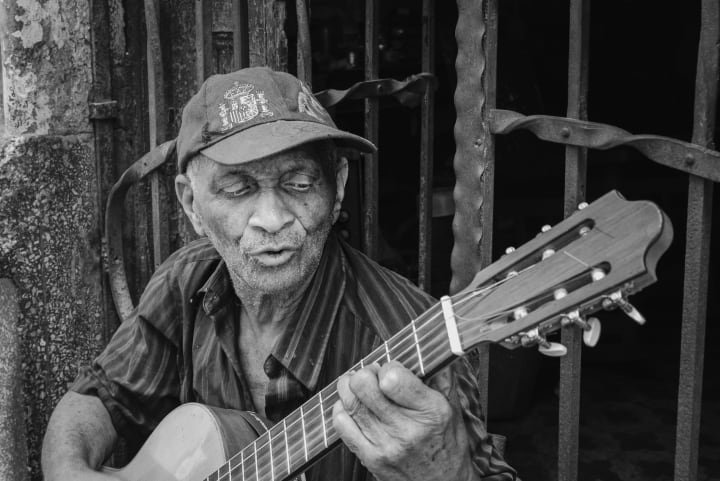
The song Sam played is of a genre specific to the city called Habanera, which like many Cuban musical styles is derived from Son. A complex mix of Spanish style guitar, African rhythms and Haitian influences, Habanera developed in the late 19th century and quickly became popular in the nightclubs of the time, picking up more influences along the way and undergoing various changes including a push in the 1940’s and 50’s to bring the music back to its roots. Despite the prevalence of Habanera, there isn’t much recorded music to be found today. In fact the first full length recording wasn’t made until 1995 when singer/songwriter Liuba Maria Hevia put down some songs for the Cuban Museum of Music. Incidentally she then re recorded most of the songs in 2005 having been unhappy with the sound quality of the original, made during Cuba’s Periodo Especial when resources were scarce.
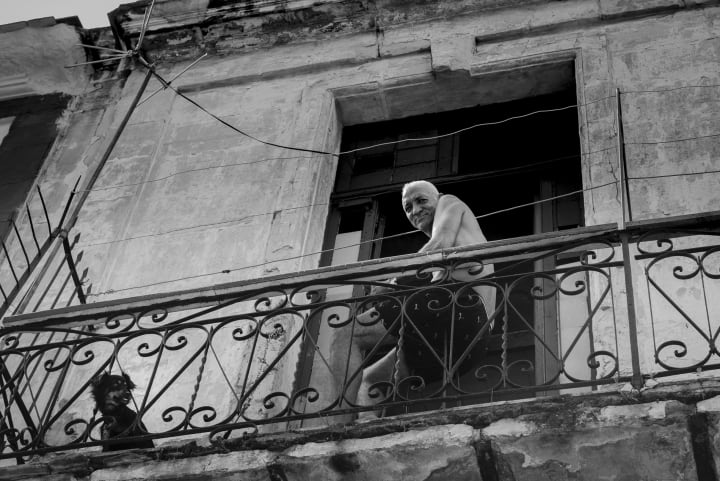
We walk a few blocks to Compostela Street. The sun is harsh now so we keep to the shaded sides of streets. People shout and waive from their balconies and door steps and the distant sound of music seems to follow us.
We come upon a building almost completely collapsed. What’s left of the original 2 story construction is a floor and a half of crumbling brick held up by makeshift scaffolding. Behind this in what should be an empty lot are rows of stalls selling meat and fresh produce, busy this time of morning with shoppers picking up the day’s necessities. Ricardo explains this repurposing is common practice. “Sometimes people can’t afford to repair these old buildings. So when they collapse they rent out the space to make some extra money.” It seems a little precarious to me, but Ricardo assures me it’s safe.

We pass through, politely declining offers of fruitas y vegetales : plátano, palta and limas all in abundance, back onto the street passing Buicks and Oldsmobiles and Russian Ladas. Not the perfectly maintained ones that take you on city tours, these are beat up, rusting and held together with whatever might be to hand. One has its hood up with its owner half submerged in the engine bay clanging and swearing. Everyone in Cuba is an amateur mechanic.
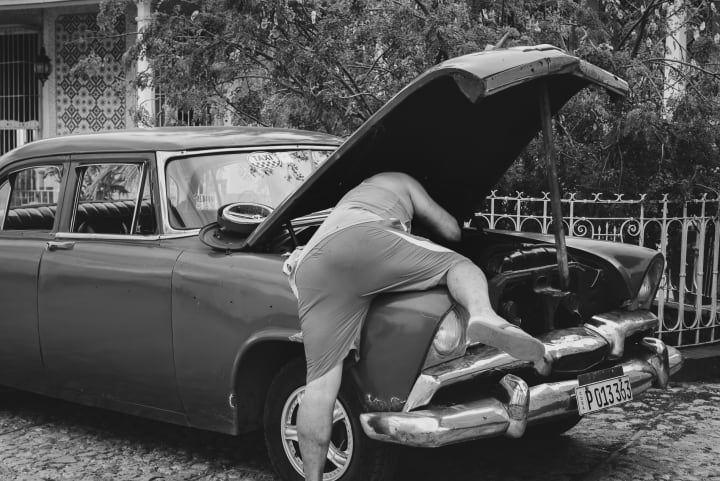
Heading along Obispo Street, home to Hemmingway’s Bar Floridita, we come to Havana Street. It’s a fairly non-descript, mostly residential boulevard. Quiet by comparison with busy Obispo, the street that takes its name from the city itself was built in 1519 and like those around it was conceived as a narrow thoroughfare to protect people from the sun. Also like the surrounding streets it has since survived raids by English, Dutch and French sea marauders. Havana was a pirate’s dream during the 16th and 17th centuries, having become a stopover for ships carrying treasures from the New World back to Spain. This led to the building of the original city walls and fortifications which protected the city from further attacks. Except for when Admiral Sir George Pocock and the Earl of Albermarle breached the city in 1762 and held it for 6 months, before handing it back as part of a treaty ending the 7 years war. This occupation was hard on the people of Havana, although it did help to stimulate trade and entrench the city’s status as an important port. The evidence of this past can be found today in the original city walls, which now form the borders of Habana Veija, the 4 forts which still stand and the intricate details of the houses.
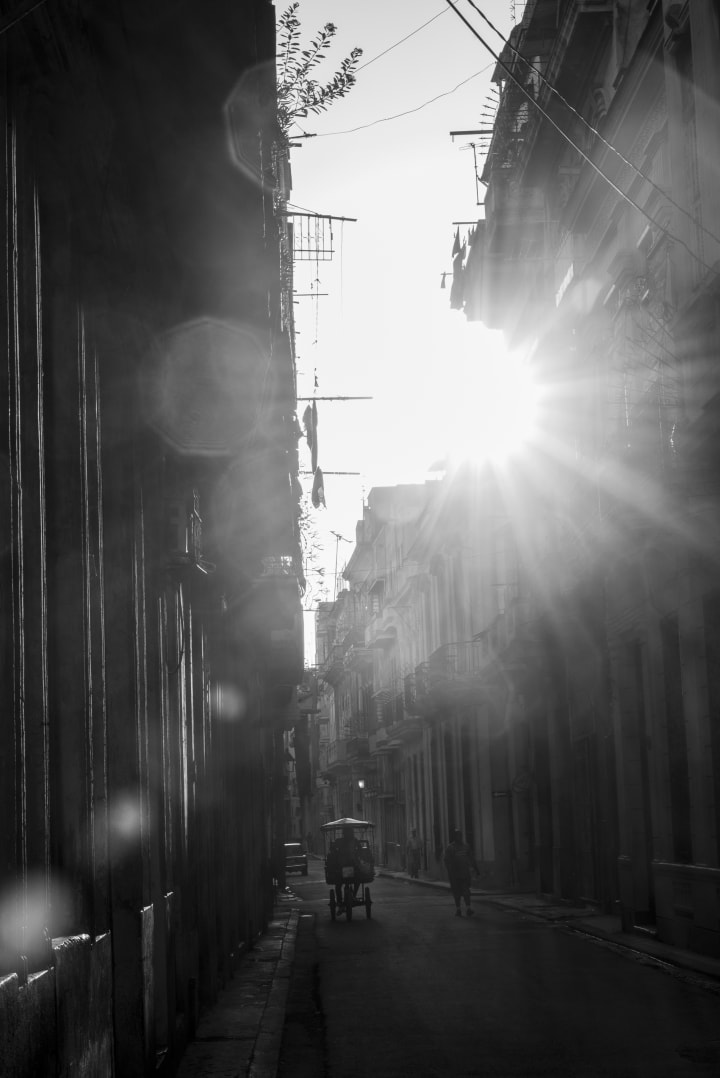
Although predominately baroque or neoclassical, Havana’s architecture has evolved in much the same way as its music, having picked up touches of classical French and later art deco during the American era of the first half of the 20th century. Many of these buildings are now being restored as shops or casa’s particular.
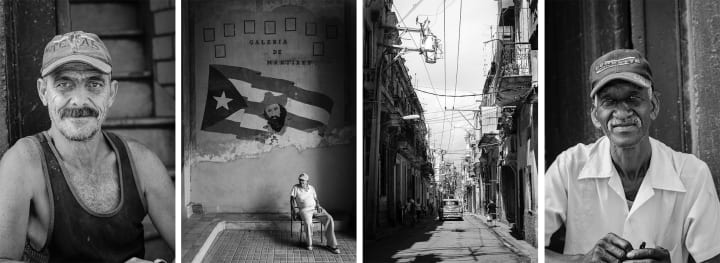
It strikes me that Cuba’s music and architecture are much like it’s people. Various groups arriving over the years and adding their little piece to the jigsaw, creating an intriguing patchwork of heritage.
“It’s a mix of everything, not any particular style anymore” explains Ricardo, referring to the architecture again. I wonder aloud how to describe this eclectic city. Ricardo thinks about this for a moment, then half smiles again, “Cuban”. He says finally.
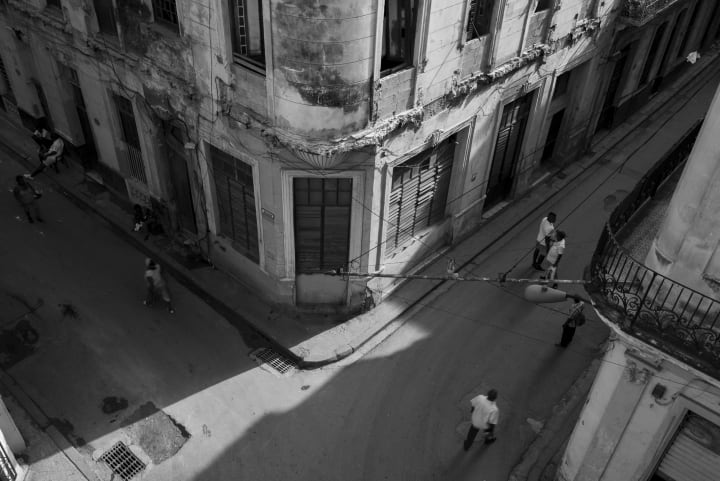
About the Creator
Mark Eden
Freelance travel photographer and writer based in Melbourne, Australia. I create images and words that help tell the stories of our vibrant, diverse world and its people.
www.markeden.com.au


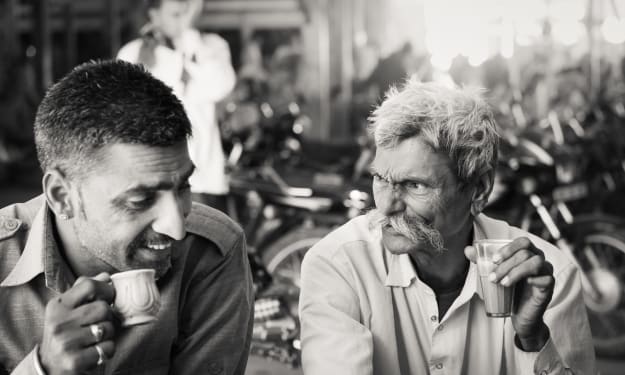



Comments
There are no comments for this story
Be the first to respond and start the conversation.